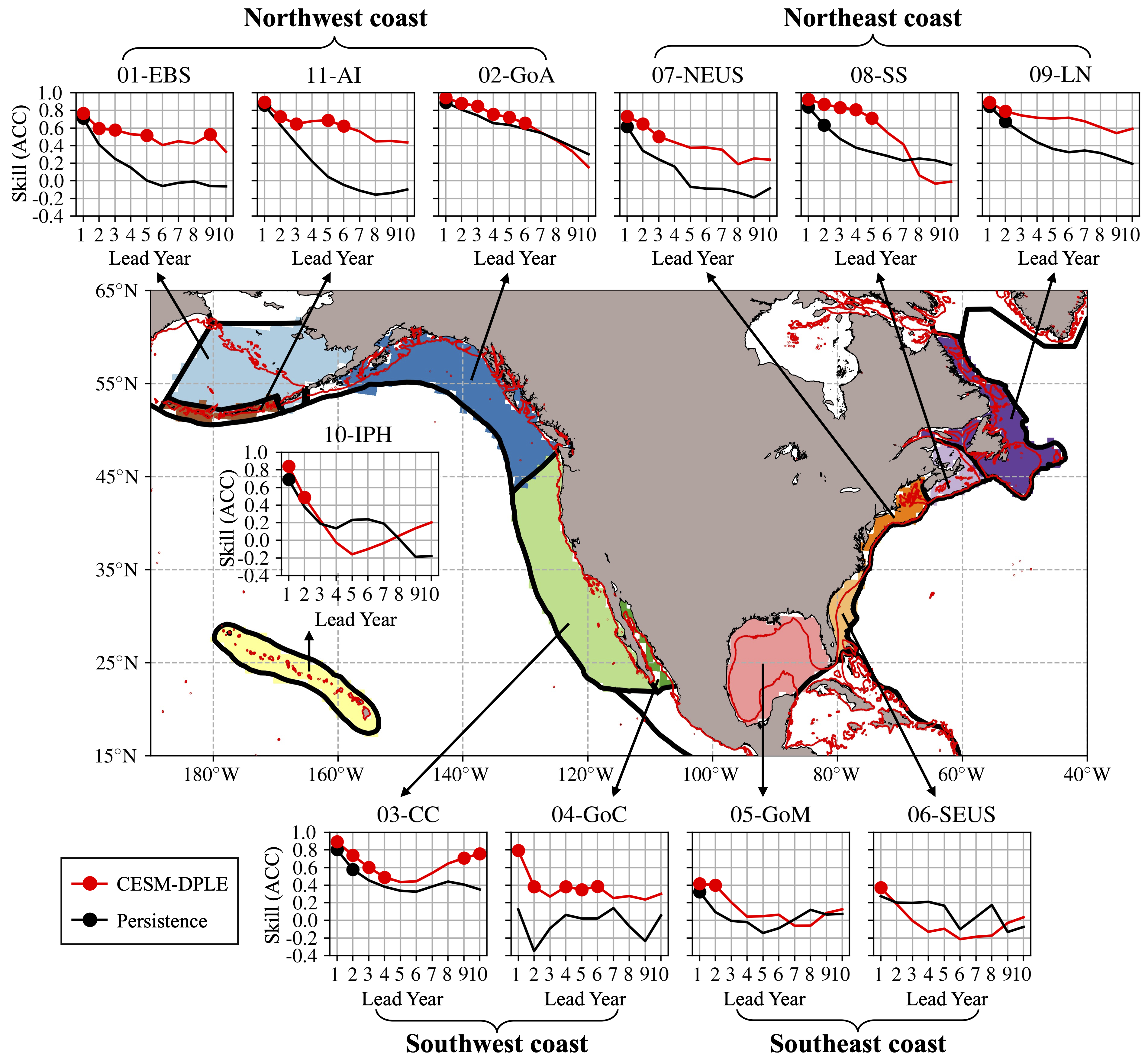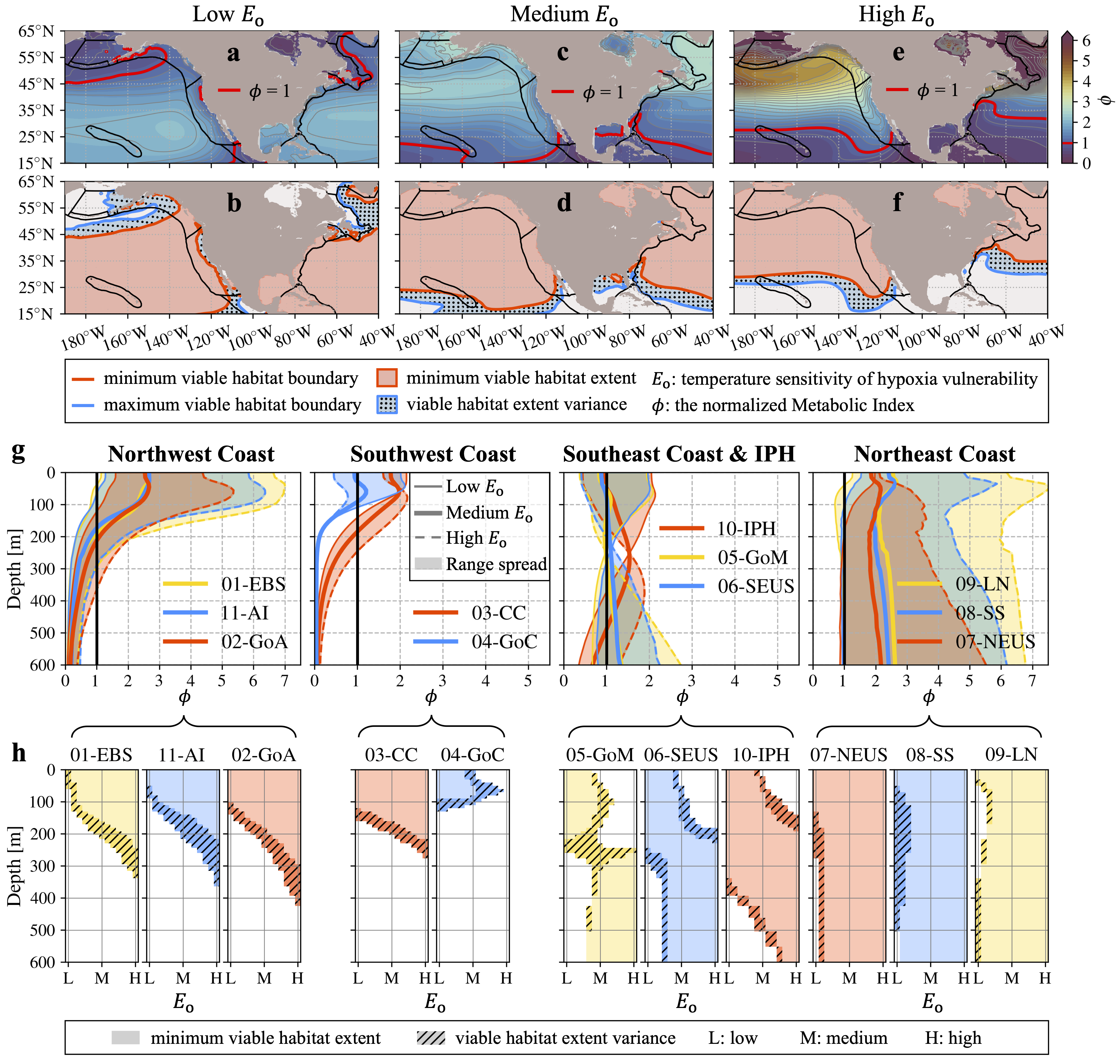Projects
Skillful multiyear prediction of marine habitat shifts jointly constrained by ocean temperature and dissolved oxygen
Here we quantify interannual-to-decadal predictability of habitat shifts by combining trait-based aerobic habitat constraints with a suite of initialized retrospective Earth System Model forecasts, for diverse marine ecotypes in the North American Large Marine Ecosystems. We find that aerobic habitat viability, defined by joint constraints of temperature and oxygen on organismal energy balance, is potentially predictable in the upper-600 m ocean, showing a substantial improvement over a simple persistence forecast. The skillful multiyear predictability is dominated by the oxygen component in most ecosystems, yielding higher predictability than previously estimated based on temperature alone. Notable predictability differences exist among ecotypes differing in temperature sensitivity of hypoxia vulnerability, especially along the northeast coast with predictability timescale ranging from 2 to 10 years. This tool will be critical in predicting marine habitat shifts in face of a changing climate.
 Figure 1. Study domain and the eleven North American Large Marine Ecosystems (LMEs), with significantly higher prediction skills from the decadal prediction system against reconstruction persistence in predicting habitat viability in the upper-600 m ocean. The prediction skills are assessed as Anomaly Correlation Coefficient (ACC). Figure Source
Figure 1. Study domain and the eleven North American Large Marine Ecosystems (LMEs), with significantly higher prediction skills from the decadal prediction system against reconstruction persistence in predicting habitat viability in the upper-600 m ocean. The prediction skills are assessed as Anomaly Correlation Coefficient (ACC). Figure Source
 Figure 2. Interannual viable habitat contraction or expansion in space and shoaling or deepening within the eleven Large Marine Ecosystems (LMEs). Figure Source
Figure 2. Interannual viable habitat contraction or expansion in space and shoaling or deepening within the eleven Large Marine Ecosystems (LMEs). Figure Source
Check out the paper here›
Other Projects
- Projects · Projecting future changes in the Gulf Stream warm-core rings and their impacts on the Northeast U.S. Large Marine Ecosystem in a changing climate using regional MOM6 simulations
- Projects · Skillful multiyear prediction of marine habitat shifts jointly constrained by ocean temperature and dissolved oxygen
- Projects · Seasonal Prediction of Bottom Temperature on the Northeast U.S. Continental Shelf
- Projects · Interannual Variability of the Mid-Atlantic Bight Cold Pool
- Projects · Long-term SST Trends over the Northwest Atlantic Shelf & Slope
- Projects · Seasonal Variability of the Mid-Atlantic Bight Cold Pool